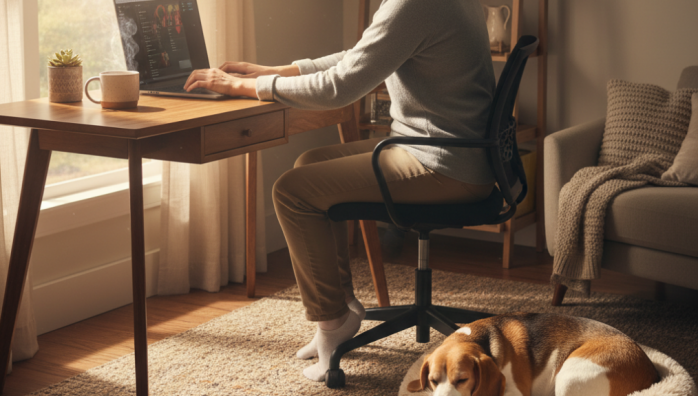Gradual Alone Training for Anxious Pets
by admin in Pet Care Basics 25 - Last Update November 21, 2025

When I first switched to remote work, I had this picture-perfect image in my head: me at my desk, my loyal dog snoozing happily at my feet. The reality? I created what I can only describe as a \'velcro dog.\' My constant presence became his new normal, and my departure for even a quick errand triggered a level of anxiety I wasn\'t prepared for. The whining, the scratching at the door... it was heartbreaking and, honestly, a little frustrating. I realized I needed a better strategy than just hoping he\'d \'get over it.\'
My mistake: thinking \'tough love\' would work
Initially, I tried the \'rip the band-aid off\' approach. I\'d leave for an hour, hoping he\'d just settle down. It was a complete failure. I\'d come home to a stressed-out pup and sometimes a chewed-up shoe. It became clear that this method was only reinforcing his fear that my leaving was a terrible, unpredictable event. I learned the hard way that you can\'t force a pet to be comfortable; you have to teach them that being alone is safe.
The step-by-step process that rebuilt my dog\'s confidence
After a lot of trial and error, I landed on a gradual training method that truly worked for us. It’s all about building positive associations and moving at your pet\'s pace. It requires patience, but the payoff is a calmer pet and a less-stressed you.
Step 1: Making departure cues meaningless
I noticed his anxiety would spike the moment I picked up my keys or put on my coat. These were triggers. So, I started desensitizing him. I\'d pick up my keys and then just sit on the couch. I\'d put on my shoes and then walk to the kitchen to get a glass of water. Over time, these actions stopped predicting my departure and lost their power to cause panic.
Step 2: The \'non-event\' goodbye
This was a big one for me. I used to do a big, dramatic, guilt-ridden goodbye. It turns out, this was just hyping him up and making my leaving a huge deal. I switched to a calm, quiet exit. A simple \"I\'ll be back soon\" and that was it. The same goes for returning. I ignore him for the first minute or two until he calms down, then I give him a gentle hello. It signals that my coming and going is just a normal, boring part of the day.
Step 3: Baby steps, literally
The core of the training was starting incredibly small. I would literally just step out the front door, close it, and come right back in. We\'re talking 10-20 seconds. I did this until he showed no reaction. Then I progressed to a minute, then five, and so on. A simple pet camera was my best friend here; it allowed me to see if he was settling or becoming anxious, so I knew when to come back.
Step 4: The power of high-value distractions
To create a positive association, I started giving him a special treat that he *only* got when I left. For us, it was a frozen KONG toy stuffed with his favorite things. He became so focused on his special treat that he barely noticed I was gone for those first few crucial minutes. This was a game-changer for extending the duration of my absences.
A final thought on patience
This process wasn\'t linear. Some days we\'d push the time to 30 minutes, and the next day he\'d get anxious after 10. The key was to not get discouraged and to go back a step if needed. Every pet is an individual, and this is just what worked for my dog and me. For severe cases of anxiety, I always, always recommend chatting with your vet or a certified animal behaviorist to create a tailored plan.













